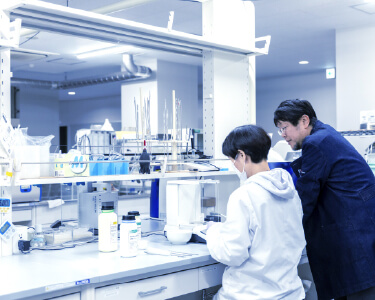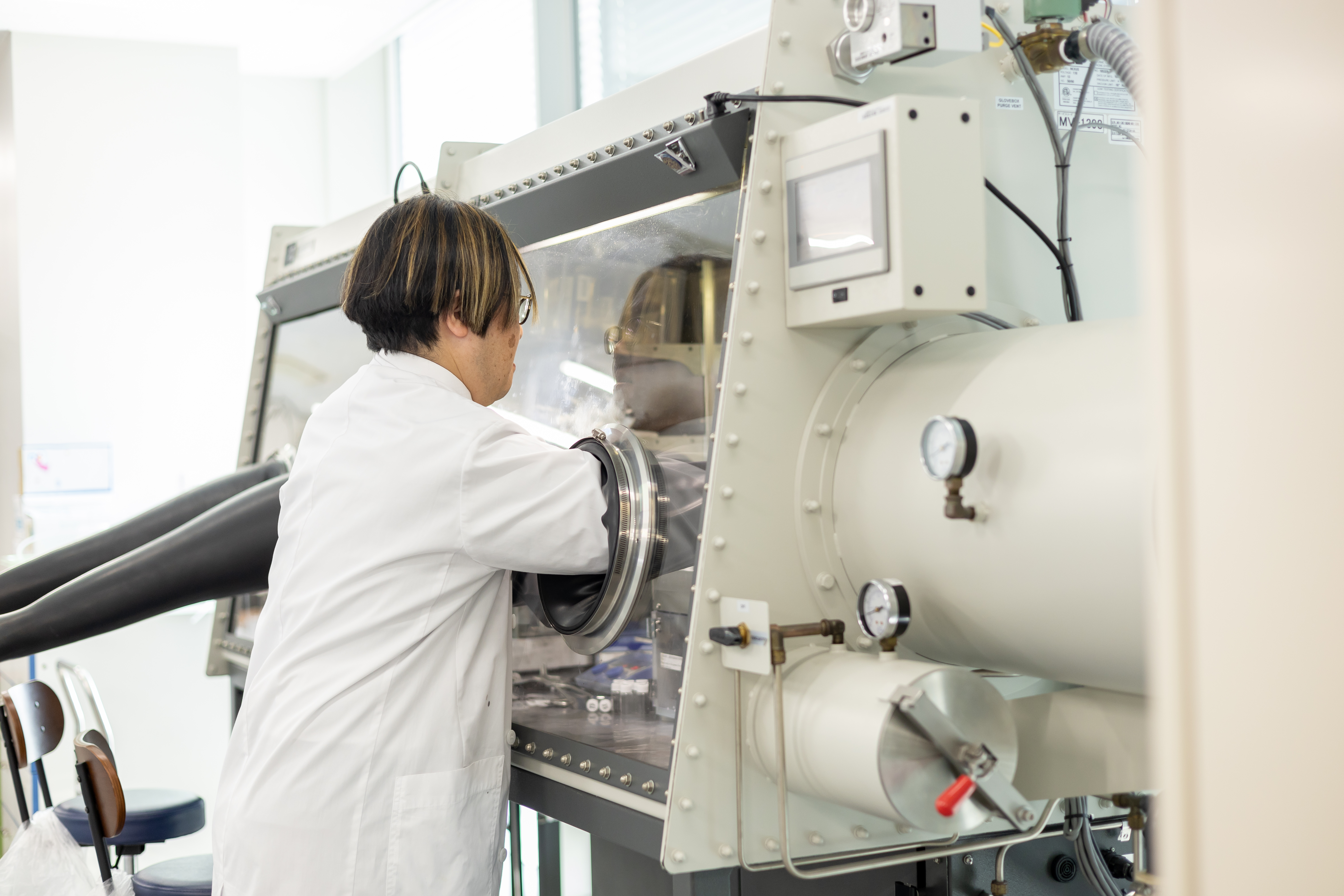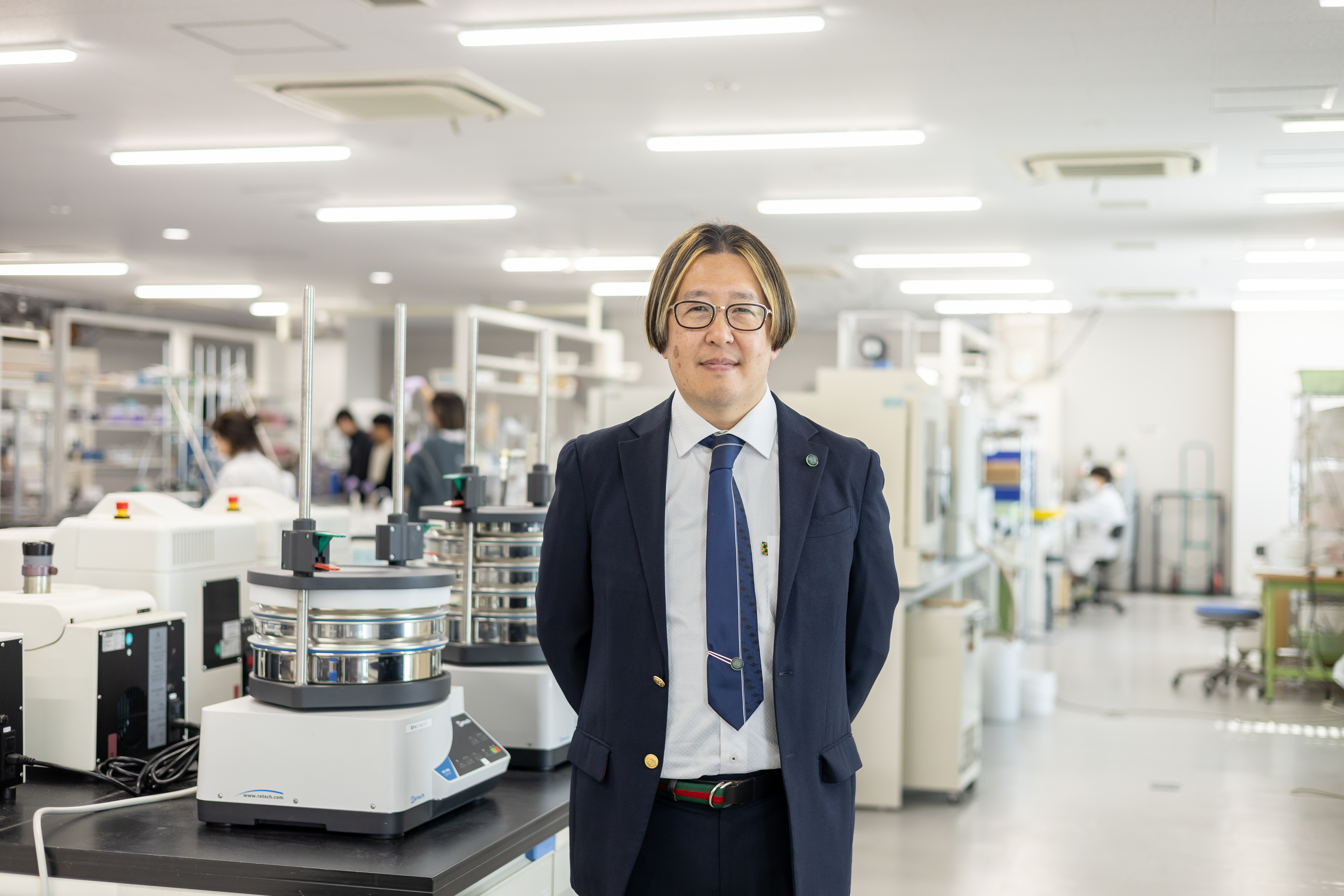
Research
Developing "aqueous battery" that realizes ultimate safety
About research
Minimizing the risk of battery fire
Rechargeable batteries are used in many things around us, such as electric vehicles, smartphones, and laptops. Lithium-ion batteries, which use lithium for the electrodes, are widely used, but there is a risk of fire if used incorrectly, and some safety issues have been pointed out. In this context, our laboratory is working on developing an "aqueous battery," which is extremely safe. While flammable substances are used in the electrolyte of lithium-ion batteries, aqueous batteries use water as the electrolyte. Even if a fire occurs due to a short circuit or other cause, the battery will not ignite, so the risk of fire and the spread of fire is minimized.

Hopes for its use in electric vehicles and more
Research into aqueous batteries is being actively conducted worldwide due to their high safety, but it is true that there are still issues to be overcome in terms of their widespread use, such as their large weight and insufficient output voltage. In this context, our laboratory is conducting research to realize aqueous batteries that solve these issues.
Specifically, we are trying to increase the output voltage from the conventional 1.2 V to 3 V by developing unique electrodes using “composite anion surface" and "high entropy ceramics." We also hope to enable rapid charging and discharging by using a technology called "selective material permeation at solid-liquid interfaces using molecular technology (molecular gate effect)." The new aqueous batteries we are researching are expected to be introduced in electric vehicles and stationary home storage batteries,
which require high long-term safety, and if they are realized, they will enrich our lives.

Affiliated researchers

-
Principal Investigator (PI)
Zettsu NobuyukiProfessor


